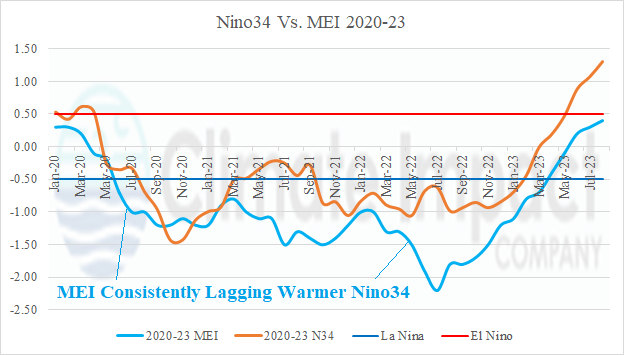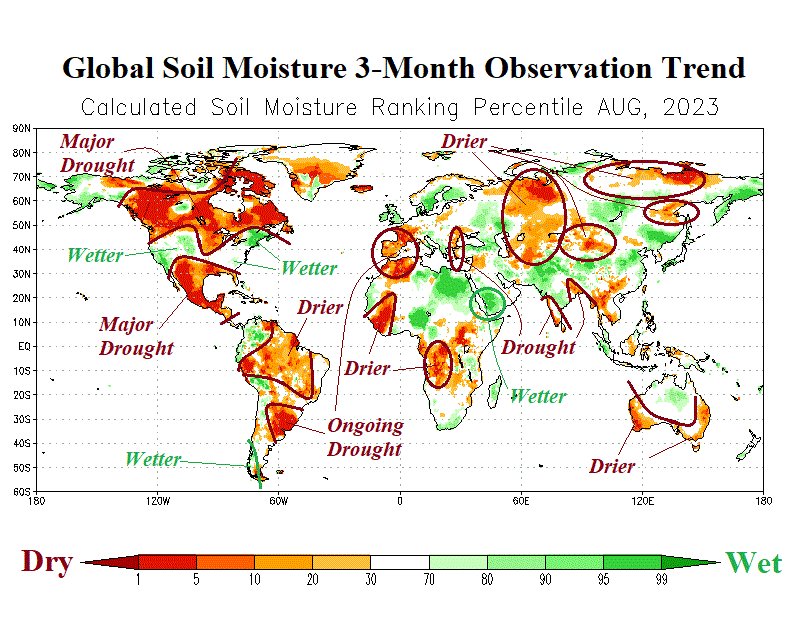
September 2023 Global Soil Moisture 3-Month Observation/Forecast Trend
09/08/2023, 9:13 am EDT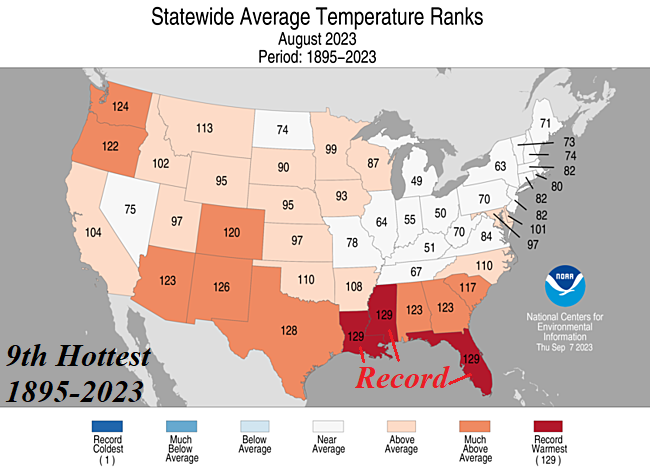
The AUG-23 and JUN/JUL/AUG 2023 U.S. State Climate Rankings
09/11/2023, 1:47 pm EDTExecutive summary: The JUL/AUG multivariate ENSO index (MEI) failed to indicate evolution of an El Nino climate despite the robust oceanic El Nino presence across the equatorial East Pacific. Consequently, adjustments of the ENSO 2023-24 forecast considering MEI indicate that despite a robust warm equatorial East Pacific SSTA regime continuing to strengthen during Q4/2023, the attendant El Nino climate is likely moderate.
Discussion: A vigorous El Nino has formed in the eastern equatorial Pacific as identified by a traditional measuring index of ENSO phase, the Nino34 SSTA. HOWEVER, the response of the atmosphere to equatorial warming is weak. Multivariate ENSO index (MEI), a measure of the atmosphere’s reaction to equatorial SSTA patterns, indicates neutral ENSO for JUL/AUG (Fig. 1). The atmospheric response to the equatorial SSTA pattern is the one that counts. Consequently, the season 1-3 ahead forecast is based on a MEI analog (Fig. 2). The reason for the lack of atmospheric response, based on MEI, is not well-understood. The preliminary explanation (by Climate Impact Company) is the traditional consolidation of anomalous warmth in the tropical East Pacific is not happening in 2023 as many other sectors of the global oceans are warmer than normal plus the usual cooling in the equatorial West Pacific during El Nino is weak. In fact, the subsurface equatorial Pacific remains warmer than normal which is not typical of vigorous El Nino episodes. The Nino34 SSTA analog forecast indicates oceanic El Nino is vigorous (Fig. 3). However, El Nino 2023-24 will feature a moderate El Nino climate likely to fade back toward La Nina one year from now.
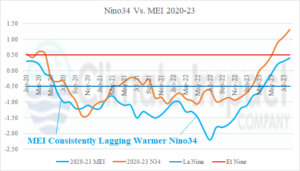
Fig. 1: Comparing Nino34 SSTA and multivariate ENSO index since January 2020 reveals MEI has consistently lagged Nino34.
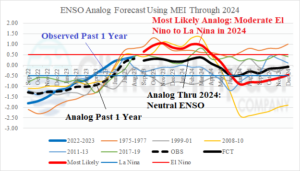
Fig. 2: ENSO analog forecast projecting atmospheric ENSO using MEI. The warmer solution is based on a consensus between the MEI analog and warmer Nino34 forecast.
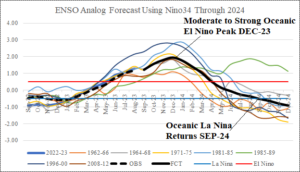
Fig. 3: ENSO analog forecast based on conventional Nino34 SSTA.
![Climate-Impact-Company-logo-sm[1]](https://climateimpactcompany.com/wp-content/uploads/2023/08/Climate-Impact-Company-logo-sm1.png)
